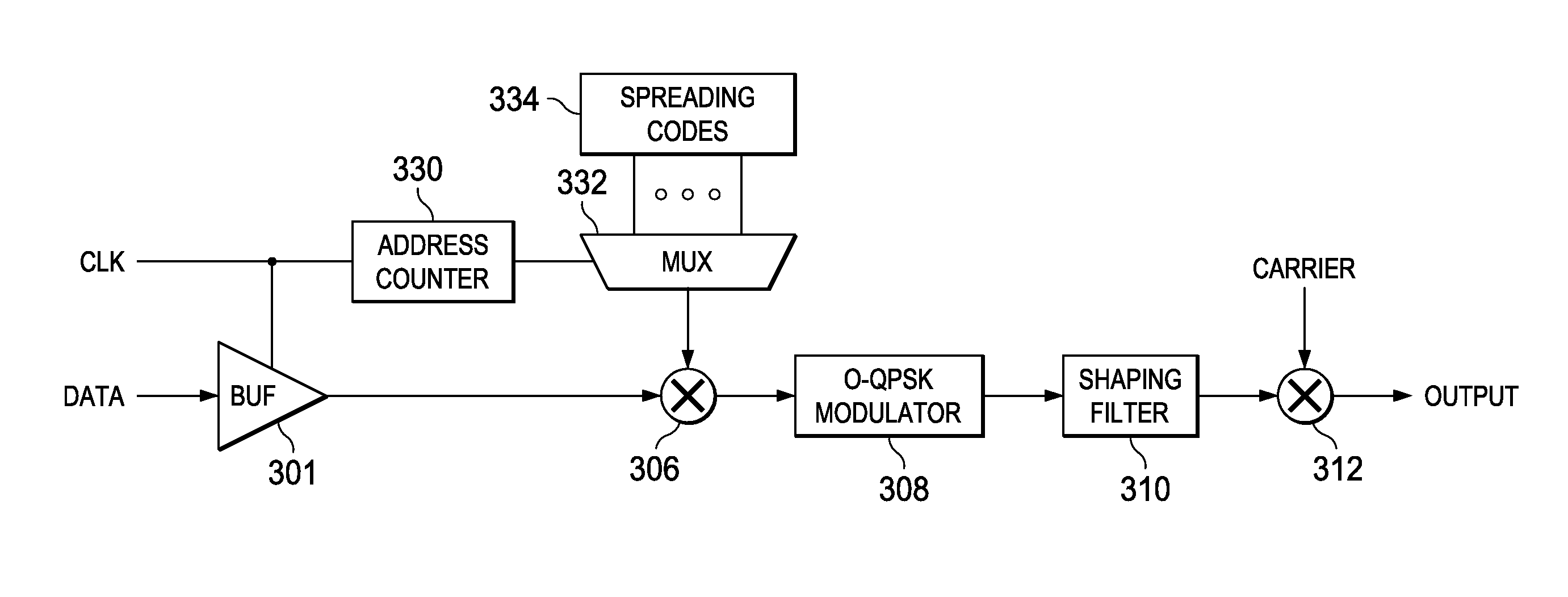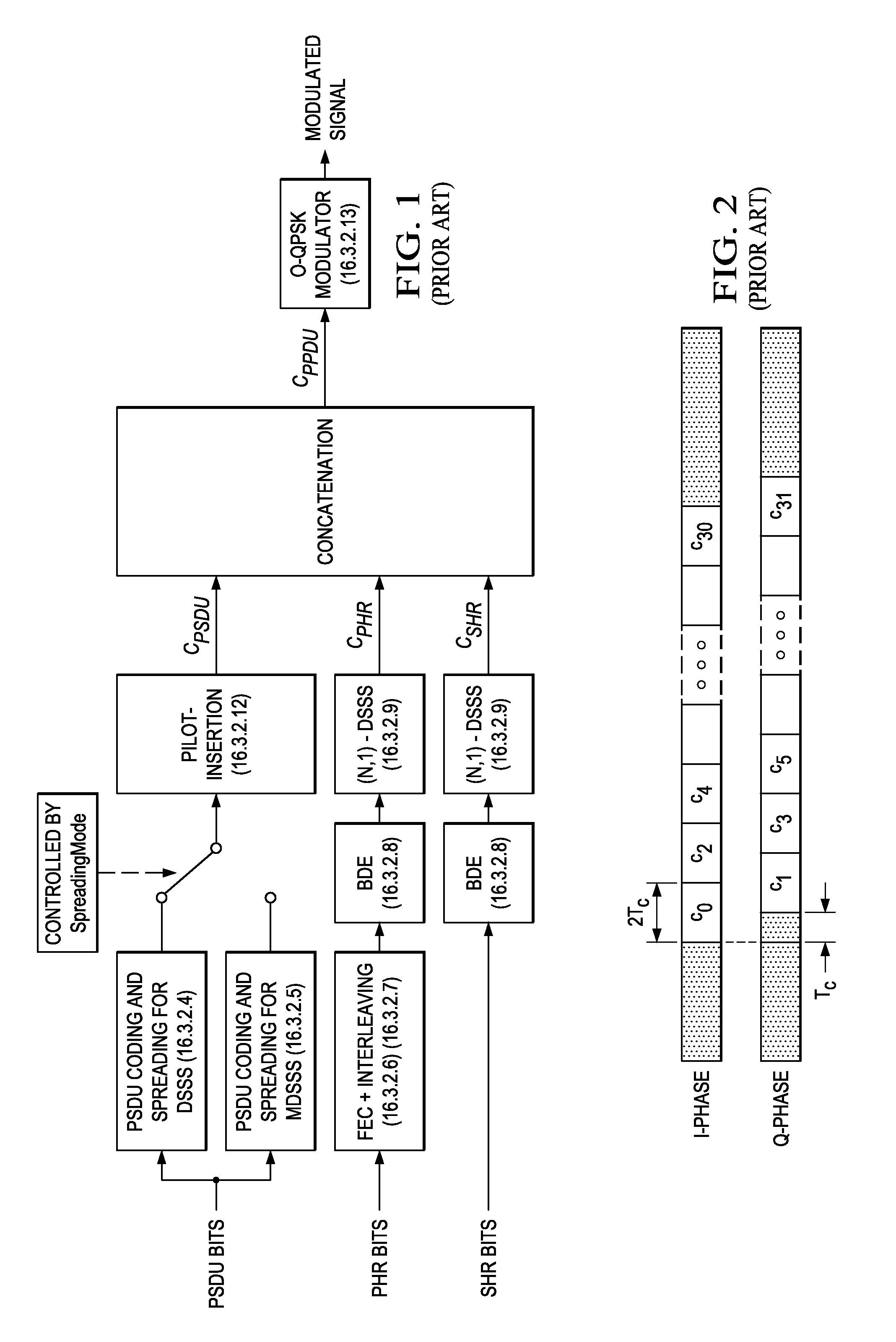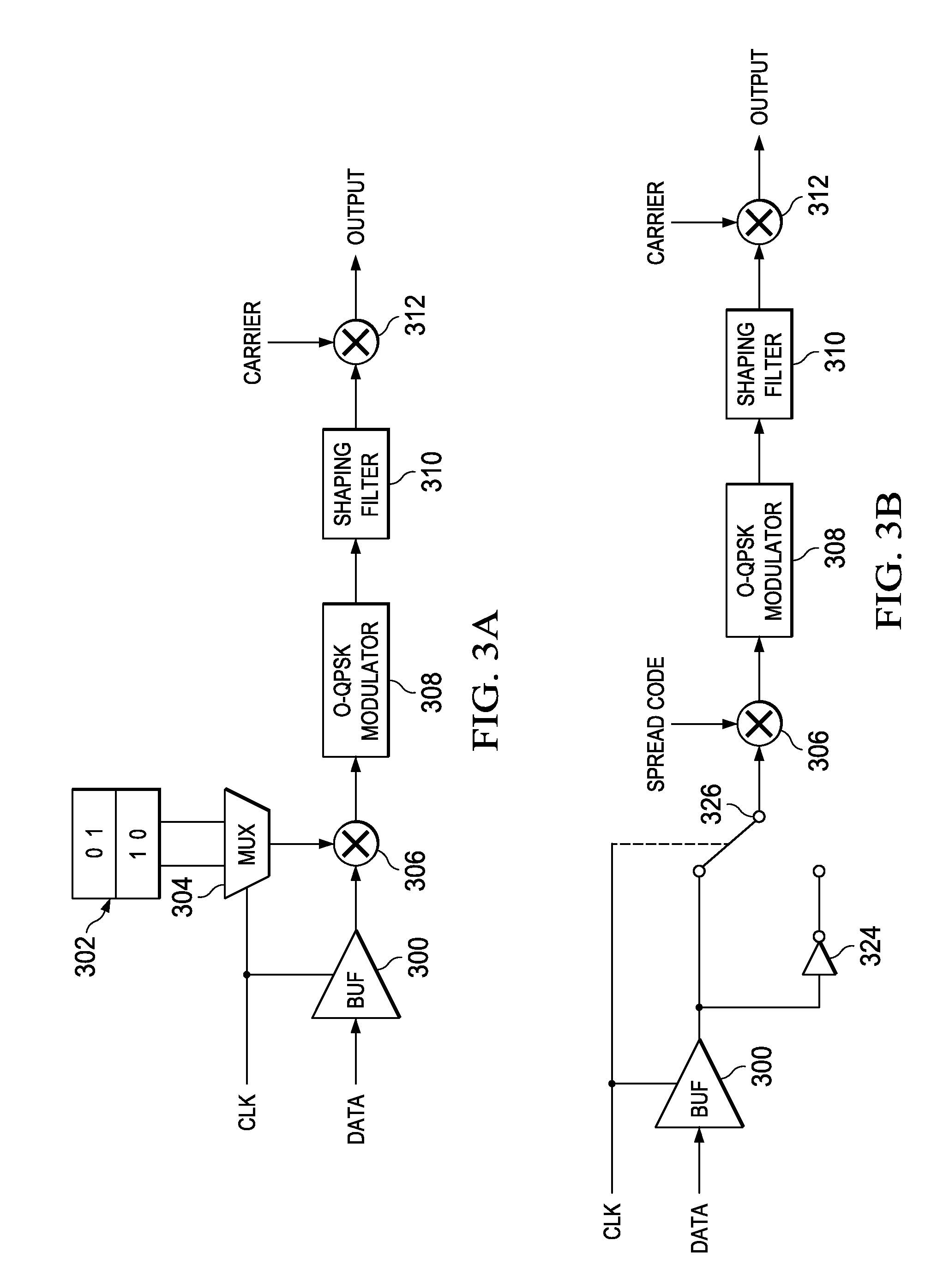DSSS inverted spreading for smart utility networks
a smart utility network and inverted spreading technology, applied in the field of wireless communication systems, can solve the problems of increasing the amount of traffic that goes through some devices, poor communication links between some meters and hubs, and computational complexity in generating soft decisions that are necessary for a viterbi decoder
- Summary
- Abstract
- Description
- Claims
- Application Information
AI Technical Summary
Benefits of technology
Problems solved by technology
Method used
Image
Examples
first embodiment
[0029]Referring to FIG. 3A, there is a block diagram of a wireless transmitter of the present invention. The transmitter includes an input buffer 300 coupled to receive a data sequence (DATA). A multiplex circuit 304 is coupled to a memory circuit 302 having stored spreading code values. An exclusive OR (XOR) circuit 306 is coupled to receive a sequence of data bits from input buffer 300 and a selected spreading code via multiplex circuit 304. The XOR circuit 306 produces a spread data sequence which is an exclusive OR (XOR) of each bit with a respective spreading code. The spread data sequence is applied to offset quadrature phase shift keyed (O-QPSK) modulator 308 and, subsequently, to shaping filter 310. In some embodiments the modulator and shaping filter may be combined by using a lookup table to implement the combination of the two functions. The data sequence from shaping filter 310 is applied to modulator circuit 312 where it is modulated by a radio frequency (RF) carrier (C...
second embodiment
[0031]Referring next to FIG. 3B, there is a block diagram of a wireless transmitter of the present invention. The transmitter includes an input buffer 300 coupled to receive a data sequence (DATA). A switching circuit 326 is coupled to receive either a data bit from buffer 300 or an inverted data bit produced by inverter 324 during each half cycle of CLK. The switching circuit may be a transmission gate or other suitable logic circuit as is well known in the art. Either the selected data bit or inverted data bit is then applied to XOR circuit 306. XOR circuit 306 is also coupled to receive a spreading code which is applied to either the selected or inverted data bit. The XOR circuit 306 produces a spread data sequence which is an exclusive OR (XOR) of each bit with spreading code. The spread data sequence is applied to O-QPSK modulator 308 and, subsequently, to shaping filter 310. The data sequence from shaping filter 310 is applied to modulator circuit 312 where it is modulated by ...
third embodiment
[0034]Turning now to FIG. 3C, there is a wireless transmitter of the present invention which may be extended to communication systems with multiple spreading codes. The transmitter of FIG. 3C is similar to the embodiment of FIG. 3A. Memory circuit 334 is arranged to store the multiple spreading codes. Address counter 330 addresses selected spreading codes in memory circuit 334, and multiplex circuit 332 applies the selected spreading codes to XOR circuit 306.
[0035]Operation of the transmitter of FIG. 3C will now be explained with reference to Table III below for the previously discussed data sequence and 4-chip spreading. One of ordinary skill in the art having access to the instant specification will understand that the embodiment of FIG. 3C may be extended to any practical data sequence and spreading code. The transmitter receives a sequence of data bits at input buffer 301. Each data bit of the sequence has a respective sequence number (0-3) which is either even or odd. The input...
PUM
 Login to View More
Login to View More Abstract
Description
Claims
Application Information
 Login to View More
Login to View More - R&D
- Intellectual Property
- Life Sciences
- Materials
- Tech Scout
- Unparalleled Data Quality
- Higher Quality Content
- 60% Fewer Hallucinations
Browse by: Latest US Patents, China's latest patents, Technical Efficacy Thesaurus, Application Domain, Technology Topic, Popular Technical Reports.
© 2025 PatSnap. All rights reserved.Legal|Privacy policy|Modern Slavery Act Transparency Statement|Sitemap|About US| Contact US: help@patsnap.com



